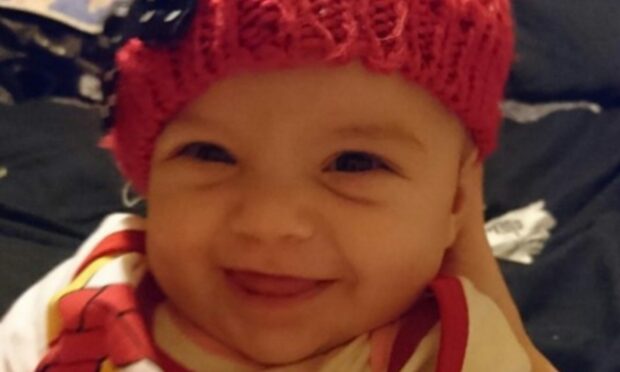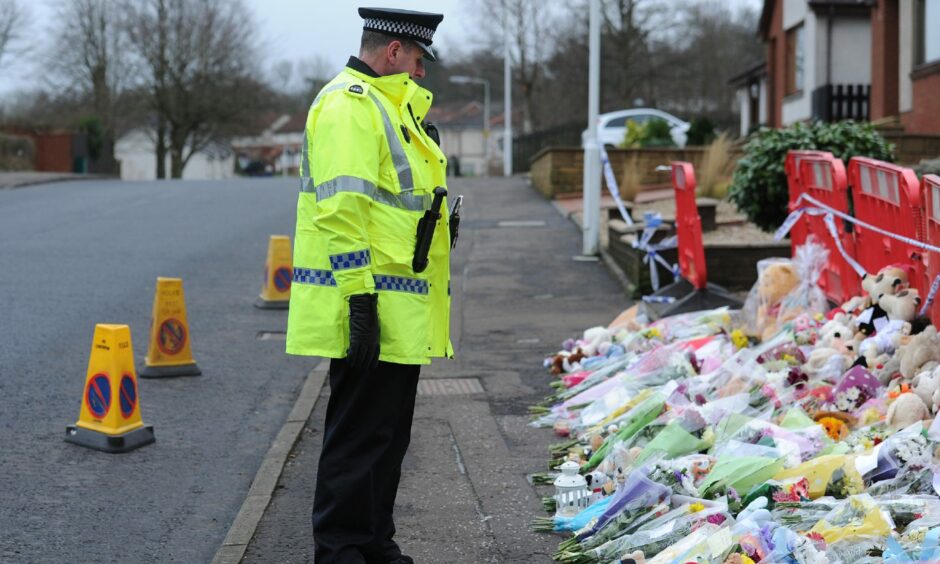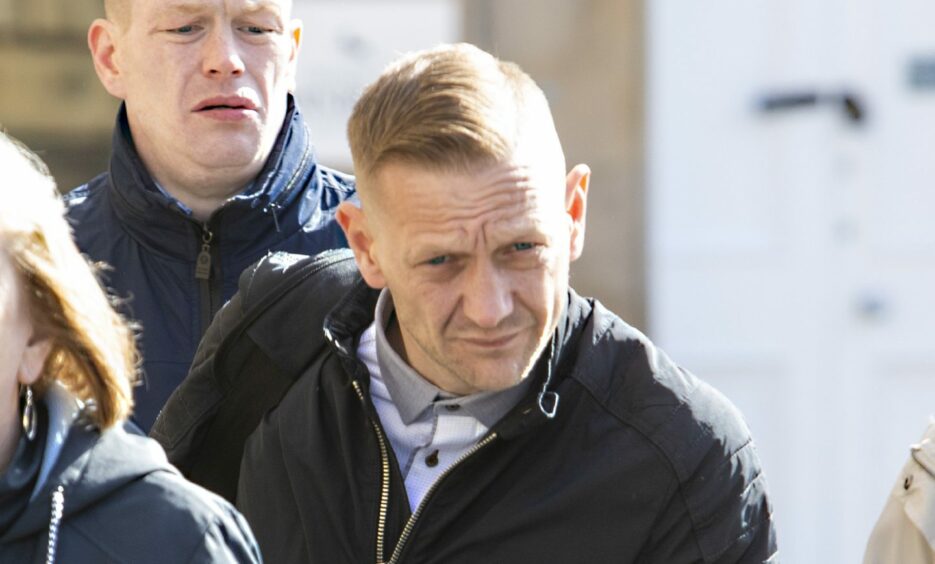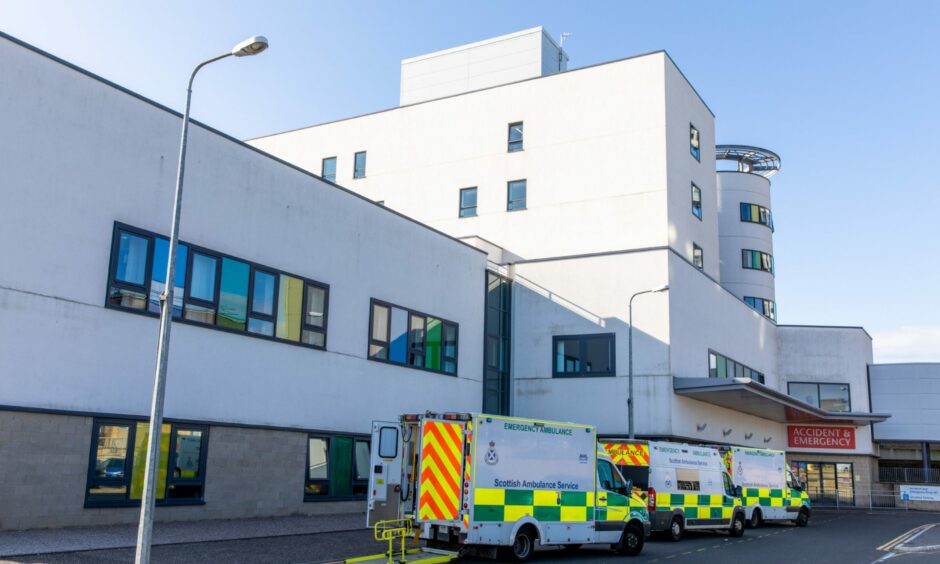The ex-soldier who killed tragic Fife baby Hayley Davidson was considered a “positive” influence on the family by child protection officials, we can reveal.
A review into the circumstances surrounding the shocking crime – which can finally be made public for the first time – found Gordon McKay was not considered a risk when checks were carried out before he shook the five-month-old girl to death.
But while McKay’s relationship with Hayley’s mother was not considered to be a problem by officials, the probe has now confirmed that other “concerns” were raised about the family before she died from a bleed on the brain.
Despite the “increasing number of professionals” involved, no formal child protection measures were considered, it was “unclear” which agency was taking the lead with the family, and there was “no clear record” of the actions assigned to officials.
Medics also “questioned” the “unusual” nature of an injury which led to Hayley’s hospitalisation several weeks before her death, but “the concerns were not escalated”.
Four tragic child deaths
The tragedy was one of four shocking child deaths which rocked Fife between 2014 and 2016, with Hayley’s following that of Mikaeel Kular, Liam Fee and Madison Horn.
The cases led to child protection services in Fife coming under intense scrutiny.
McKay, who was the boyfriend of Hayley’s mother, was jailed for seven-and-a-half years in 2018 after he pleaded guilty to the culpable homicide of the youngster.
He initially claimed that Hayley was injured after wriggling off a beanbag when he left her alone to run a bath.
But he later admitted to police he had shaken her “three or four times”, resulting in her head “whipping backwards and forwards”.
Scans revealed the baby had a bleed on the brain, and Hayley was taken off life support three days after the incident, which happened on Valentine’s Day 2016, at McKay’s home in Buckhaven.
Significant case review delays
After her death, child protection officials almost immediately agreed to carry out a significant case review, but it had to be put on hold as a result of the legal proceedings against McKay.
The probe restarted after McKay was jailed in May 2018, and was finally completed and published in January last year, but was never publicised, despite the high-profile nature of the case.
It identified six key findings which were “shared and discussed in detail” with Fife’s child protection committee and chief officers.
The review report is anonymous, referring to Hayley as “Child B” and to McKay as a “family friend”.
Some of the findings were said to have “little or no direct connection to Child B having been killed by a family friend”.
However, the report states: “Prior to Child B’s death, checks had been undertaken on the family friend by agencies.
“He was found to have no record of violence. In fact his involvement with the family
was regarded as supportive and positive.”
The report also found: “A number of concerns which had no relation to the family friend were raised and an increasing number of professionals were involved with the family over a period of time.
“Meetings were held and discussions included child safety but despite direct and indirect signals about the potential impact no formal child protection measures were considered.
“At times it was unclear which agency was to be the lead professional for the case although social work assumed this role.
“The lack of a formal minute meant there was no clear record of the actions assigned to individuals or which agency would coordinate the plan.
“It was also not clear which risk assessment tools or frameworks were used to inform risk and protective factors.”
‘Unusual and concerning’ injury
During McKay’s trial, the court was told that Hayley was taken to hospital with a broken arm just weeks before her death.
The High Court in Livingston heard that McKay accepted blame for the incident but medics had not considered it suspicious.
In the review, it is revealed that a consultant had “questioned the unusual nature of the child’s injury” after Hayley was discharged.
“Three consultants from three different clinical settings across two hospitals were involved in the diagnosis, treatment and management of the child’s injury, but there was no overall clinical coordination, oversight or ownership of the responsibility to review the initial question posed by the consultant,” the report said.
It has previously been reported that social services were notified of the injury at the time but did not intervene.
The review highlighted the use of language that can be “either misunderstood or led to assumptions being made”, such as describing an injury as “accidental” or “consistent with the explanation”.
The report said: “Consultants had assessed, reviewed and recorded that the history and examination were consistent with the explanation given for the injury.
“At no point, however, could the cause of the injury be verified and several health professionals commented that an injury of this nature in a non-mobile child was
both unusual and concerning.”
Scans later showed that Hayley had “a number of healing fractures over various parts of her body and of different ages” when she was admitted to hospital.
The report outlines various improvements made to services in recent years, including that all paediatric imaging from Fife for children under one year is now reported to a consultant paediatric radiologist at the Royal Hospital for Sick Children routinely within 48 hours.
Updated fracture guidance also says that all under-twos will be admitted to the children’s ward for a full assessment.
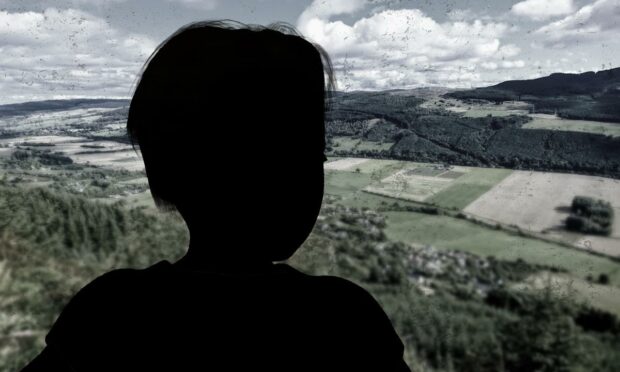
Details of the review in Fife emerged just a few weeks after another shocking report was revealed, relating to a different “Child B”.
The youngster had been left on the brink of death as a result of severe neglect in Perth and Kinross, and was only saved after a horrified member of the public alerted police to their “deathly” pale complexion.
Significant case reviews are put in place to make sure any learning and improvements to services are shared with the appropriate agencies.”
Alan Small, the independent chairman of Fife’s child protection committee, said: “This is a historic case, and the independent review was published at its conclusion.
“Significant case reviews are put in place to make sure any learning and improvements to services are shared with the appropriate agencies.
“This report refers to Child B and is anonymous at the request of the child’s family to protect their privacy and confidentiality now and in the future. We would ask everyone to respect the family’s right to privacy and peace.”
Why the two horrific ‘Child B’ cases raise transparency questions for officials
